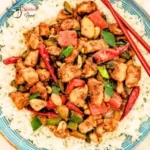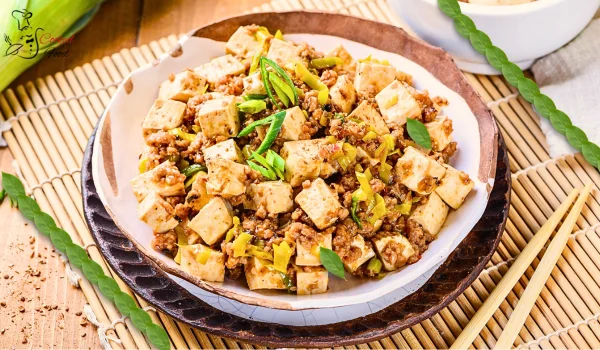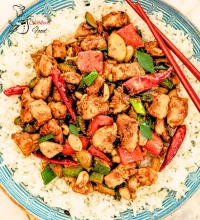Recipe for Mushroom Risotto Italian
The Characteristic Italian Comfort Food Introduction
More than just a meal, risotto is a statement of Italian cooking, combining simplicity and elegance into a luxurious but cosy dinner. Rising from Northern Italy, risotto has won praise from all around for its creamy consistency and versatility in using many ingredients. Whether it’s a contemporary seafood variation or a classic Risotto alla Milanese, this famous meal highlights the skill of careful cooking and attention to detail.
We will discuss in this post the background, cooking methods, and popular variants of risotto together with its cultural relevance and nutritional value. You will value why risotto is a treasured staple in kitchens all around by the conclusion.
An Historical Trip
The origins of risotto are in the Middle Ages when rice first arrived in Italy. Arrived in the Po Valley’s rich plains thanks to Arab traders, rice flourished. Northern Italy had developed as a center for rice farming by the 14th century, generating short-grain types including Arborio, Carnaroli, and Vialone Nano, perfect for risotto because of their great starch content.
The meal itself started to take shape in the sixteenth century. One of the first risotto recipes, legend has it that Risotto alla Milanese was developed in 1574 during Milan’s Cathedral’s building. Added to the rice dish, saffron—used to tint the stained glass windows—also gave the food its distinctive golden color. Rising from regional tastes and ingredients over the years, risotto finally became an emblem of Italian gastronomic expertise.
What is Risotto:
Risotto distinguishes itself by depending on good ingredients and a careful cooking technique. Let’s review the fundamental elements:
Short-grain rice chosen for their capacity to absorb liquid and release starch, thereby producing a creamy texture are Arborio, Carnaroli, and Vialone Nano.
Whether chicken, vegetable, or seafood, a good broth forms the backbone of the meal. The broth is added little by bit to give the rice rich, flavorful tastes.
Finely sliced onions provide depth and sweetness, therefore forming the aromatic basis of risotto.
Wine: Traditionally used to deglaze the pan and provide a subdued acidity to counter the richness of the dish, white wine
Parmesan or Pecorino Romano grated into the risotto adds smoothness and a strong, nutty taste.
Butter: Added during the final stage, butter enhances the luscious mouthfeel of risotto.
Depending on the recipe, risotto could call for saffron, mushrooms, seafood, veggies, or meats.
Mushroom Risotto Recipe
Making risotto is about the technique as much as it is about the components. Here is a detailed walk-through method for making the ideal risotto:
Get ready the aromatics.
In a broad, heavy-bottomed pan set olive oil or butter over low heat. To make a fragrant foundation, add finely chopped onions and simmer until transparent.
To toast rice, Stirring to cover every grain with grease, add the rice to the pan. Toasting the rice guarantees homogeneous cooking and improves its taste.
Deglaze with wine here.
Pour white wine and swirl until it absorbs mostly. This stage gives the dish depth and acidity.
Add gradually, broth
Start one ladle at a time adding warm broth. Stir often such that every addition absorbs before adding more. The progressive release of the rice’s starches provides the creamy smoothness of risotto.
Midway through cooking, toss flavors like saffron, mushrooms, or seafood. As the rice cooks, these tastes marry with it.
Finish with Mantecatura: Take off the heat once the rice is soft but al dente. Stir add butter and shredded cheese—a method sometimes referred to as “mantecatura.” This last stage guarantees a seamless, velvety texture.
Popular variations
Risotto’s adaptability lets one express infinite imagination. These are some popular variations:
Made with saffron, this classic Milanese dish boasts a vivid yellow hue and subdued floral aromas.
Made from wild mushrooms like porcini, this earthy variant is a fall classic.
Often enhanced with fish stock, seafood risotto is a seaside specialty with shrimp, mussels, clams, and calamari.
A soothing meal combining savory Parmesan with the inherent sweetness of pumpkin is pumpkin risotto.
A springtime delight, Asparagus Risotto emphasizes fresh herbs and crisp asparagus.
Black Risotto (Risotto al Nero di Seppia) has saline taste and a dramatic black hue derived from squid ink in Venetian cuisine.
Nutritional Analysis
Providing a combination of carbohydrates, protein, and lipids, risotto can be a healthy dinner. The nutrients change depending on the components used:
Carbohydrates: Rice gives energy, hence risotto is a filling meal.
Cheese, poultry, or seafood boost the protein count.
Including artichokes, peas, or spinach increases fiber and minerals.
Fats: Although cheese and butter add richness, one can modify them on a smaller scale.
Guideline for Perfecting Risotto
With some basic advice, you can make restaurant-quality risotto at home:
Apply premium ingredients:
Choose fresh, robust broth and real Italian rice.
By adding warm broth, you guarantee consistent cooking and avoid temperature swings.
Frequent stirring releases starch and helps the rice not adhere to the pan.
Steer clear of overcooking; the rice should stay al dente, with a faint bite.
Add salt in stages to prevent too strong seasonings.
Experiment with flavors to develop your own risotto by not hesitating to use fresh foods and combinations.
Final Thought
Celebrating Italian cooking history, risotto reflects the ideas of simplicity, patience, and inventiveness. Rising from modest Po Valley origins to become a worldwide staple, risotto has shown to be a flexible and classic meal. Every mouthful of a classic Risotto alla Milanese or a creative variant tastes Italy’s rich culinary legacy.Anyone can learn the art of risotto and add a bit of Italian grace to their table with effort and attention to detail. Thus, compile your ingredients, pour a glass of wine, and start a gastronomic adventure to find the magic of risotto.









